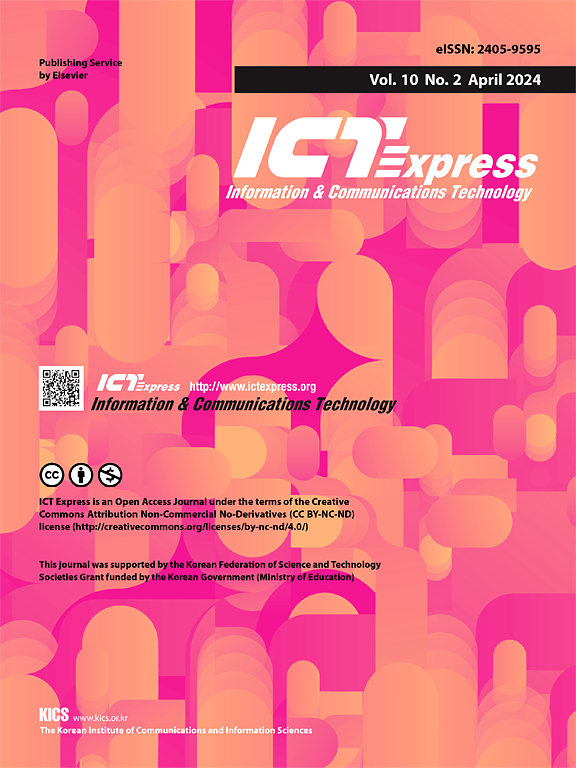在通往虚拟世界的道路上:点云视频流:视角和推动者
IF 4.2
3区 计算机科学
Q1 COMPUTER SCIENCE, INFORMATION SYSTEMS
引用次数: 0
摘要
在快速发展的虚拟世界生态系统中,视频流扮演着至关重要的角色,提供身临其境的按需体验,并让用户参与动态3D虚拟环境。点云视频流为3D扫描、AR和VR等应用程序提供了详细的3D表示。然而,高数据需求和复杂的编码带来了挑战,需要有效的资源和延迟管理。因此,用户体验(UX)在虚拟世界中至关重要,实时反馈、体验质量(QoE)和自适应UX设计等指标对于在沉浸式3D环境中保持用户粘性至关重要。因此,本文仔细研究了点云视频流的最新发展,特别关注以用户为中心、人工智能驱动和低延迟技术,超越了传统的视频流方法。我们研究了各种技术,精确定位障碍,并绘制了提升沉浸式体验质量和深度的预期路线。此外,我们的工作还包括对这些流范式进行详细的定性比较。我们还介绍了关键的元宇宙增强器,如移动边缘计算(MEC)、可见光通信(VLC)、先进的网络编码技术和数据平面开发工具包(DPDK)的集成。这些支持因素——特别是与DPDK在高效数据包处理方面的能力相结合时——具有优化资源分配、增强可靠性、减少延迟和提高点云视频流的可持续性的潜力。因此,我们的研究提供了点云视频流发展领域的整体概述,并概述了未来研究和发展的路径。本文章由计算机程序翻译,如有差异,请以英文原文为准。
On the road to the metaverse: Point cloud video streaming: Perspectives and enablers
In the rapidly evolving metaverse ecosystem, video streaming plays a vital role, offering immersive, on-demand experiences and engaging users in dynamic 3D virtual environments. Point cloud video streaming enables detailed 3D representations for applications like 3D scanning, AR, and VR. However, high data demands and complex encoding pose challenges, requiring efficient resource and latency management. As a result, user experience (UX) is critical in the metaverse, where metrics like real-time feedback, Quality of Experience (QoE), and adaptive UX design are essential for sustaining engagement in immersive 3D environments. Therefore, this paper closely examines the latest developments in point cloud video streaming, specifically focusing on user-centric, AI-driven, and low-latency techniques, transcending traditional video streaming methods. We investigate a variety of techniques, pinpoint obstacles, and chart prospective routes for elevating both the quality and depth of immersive experiences. Furthermore, our work includes a detailed qualitative comparison of these streaming paradigms. We also shed light on pivotal metaverse enhancers, such as Mobile Edge Computing (MEC), Visible Light Communication (VLC), advanced network coding techniques, and the integration of the Data Plane Development Kit (DPDK). These enablers—particularly when combined with DPDK’s capabilities in efficient data packet processing—have the potential to optimize resource allocation, strengthen reliability, reduce latency, and improve the sustainability of point cloud video streaming. Our study, therefore, offers a holistic overview of the advancing area of point cloud video streaming and outlines paths for future research and development.
求助全文
通过发布文献求助,成功后即可免费获取论文全文。
去求助
来源期刊

ICT Express
Multiple-
CiteScore
10.20
自引率
1.90%
发文量
167
审稿时长
35 weeks
期刊介绍:
The ICT Express journal published by the Korean Institute of Communications and Information Sciences (KICS) is an international, peer-reviewed research publication covering all aspects of information and communication technology. The journal aims to publish research that helps advance the theoretical and practical understanding of ICT convergence, platform technologies, communication networks, and device technologies. The technology advancement in information and communication technology (ICT) sector enables portable devices to be always connected while supporting high data rate, resulting in the recent popularity of smartphones that have a considerable impact in economic and social development.
 求助内容:
求助内容: 应助结果提醒方式:
应助结果提醒方式:


